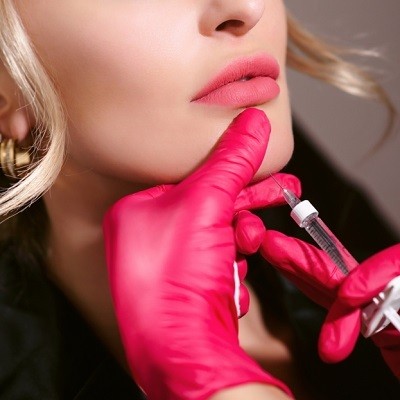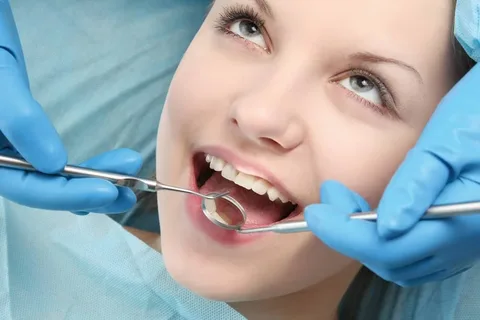Chin fillers in Islamabad are an excellent way to enhance facial balance, improve the chin’s contour, and achieve a more refined profile. After the procedure, many patients wonder if they can massage their face to alleviate tenderness or swelling, or to ensure the filler settles correctly. The short answer is: in most cases, you should avoid massaging your face unless explicitly instructed by your practitioner.In this blog, we’ll dive into the reasons behind this guideline, explain when (if ever) facial massage might be appropriate, and provide tips for proper post-filler care.
Understanding Chin Fillers:
Chin fillers are a type of dermal filler, often made from hyaluronic acid or calcium hydroxyapatite, that is injected into the chin to enhance its shape and projection. After injection, the filler integrates with the surrounding tissue to create a natural-looking result. This process takes time, and the filler needs to remain undisturbed for optimal results.
Why Avoid Massaging Your Face After Chin Fillers?
- Risk of Filler Displacement
- Dermal fillers are moldable in the initial days after injection. Applying pressure or massaging the area can cause the filler to move, leading to uneven or undesired results.
- Interference with Settling
- Fillers need time to settle and integrate with the surrounding tissue. Massaging too soon can disrupt this process, compromising the outcome.
- Increased Swelling or Bruising
- The injection process can leave the skin sensitive. Massage can exacerbate swelling, redness, or bruising, prolonging the recovery period.
- Infection Risk
- Touching or massaging the treated area increases the chance of introducing bacteria, which could lead to infection or complications.
When Can Massage Be Considered?
While massage is generally discouraged, there are specific scenarios where it may be appropriate:
- Practitioner-Directed Massage
- In some cases, your practitioner may recommend gentle massage to correct minor irregularities or lumps in the filler. This should only be done under their guidance and after a certain period (typically 1-2 weeks post-procedure).
- Specialized Aftercare Instructions
- If your practitioner has used a particular technique or filler type that requires post-treatment molding, they will guide you on how and when to massage the area.
- Professional Massages
- If needed, a professional trained in post-filler care can perform a massage to ensure safety and efficacy.
How Long Should You Avoid Massaging Your Face?
Most practitioners recommend avoiding any facial massage or significant pressure on the treated area for at least two weeks after receiving chin fillers. This allows sufficient time for the filler to stabilize and for the skin to recover from the procedure.
What to Do Instead of Massaging:
If you’re experiencing discomfort or swelling after your chin filler treatment, there are safer alternatives to massage that can help:
- Cold Compresses
- Apply a clean, soft ice pack or cold compress to the area to reduce swelling. Avoid pressing down too hard.
- Over-the-Counter Pain Relief
- If you feel discomfort, consult your practitioner about using mild pain relievers like acetaminophen. Avoid anti-inflammatory medications like ibuprofen unless directed, as they may increase bruising.
- Hydration and Skin Care
- Drink plenty of water and maintain a gentle skincare routine to support your skin’s healing process. Avoid active ingredients like retinol or acids near the treated area for a few days.
- Lymphatic Drainage Techniques
- While avoiding direct pressure on the chin, you can perform very light lymphatic drainage techniques on other parts of your face to reduce overall puffiness.
Signs You Should Contact Your Practitioner:
Massaging your face after chin fillers can lead to complications if done improperly, but even without massage, certain symptoms may indicate the need for medical attention:
- Persistent or Worsening Swelling: If swelling doesn’t subside after a few days or worsens significantly.
- Severe Pain: Discomfort that increases or doesn’t respond to pain relief measures.
- Uneven Results: Visible lumps, bumps, or asymmetry after the filler has settled (usually two weeks post-treatment).
- Signs of Infection: Redness, warmth, or pus around the injection site.
What to Expect During Recovery:
It’s normal to experience mild swelling, tenderness, or bruising in the first few days after chin filler injections. These effects typically subside within a week. During this period, focus on following your practitioner’s aftercare instructions, avoiding unnecessary pressure, and being patient as the filler integrates with your tissue.
Final Thoughts:
Massaging your face after chin fillers is generally not recommended unless advised by your practitioner. The filler needs time to settle, and applying pressure can disrupt the results, leading to uneven or undesirable outcomes. Instead, focus on gentle aftercare practices to ensure a smooth recovery and optimal results.
For more information visit Dynamic clinic in Islamabad.




